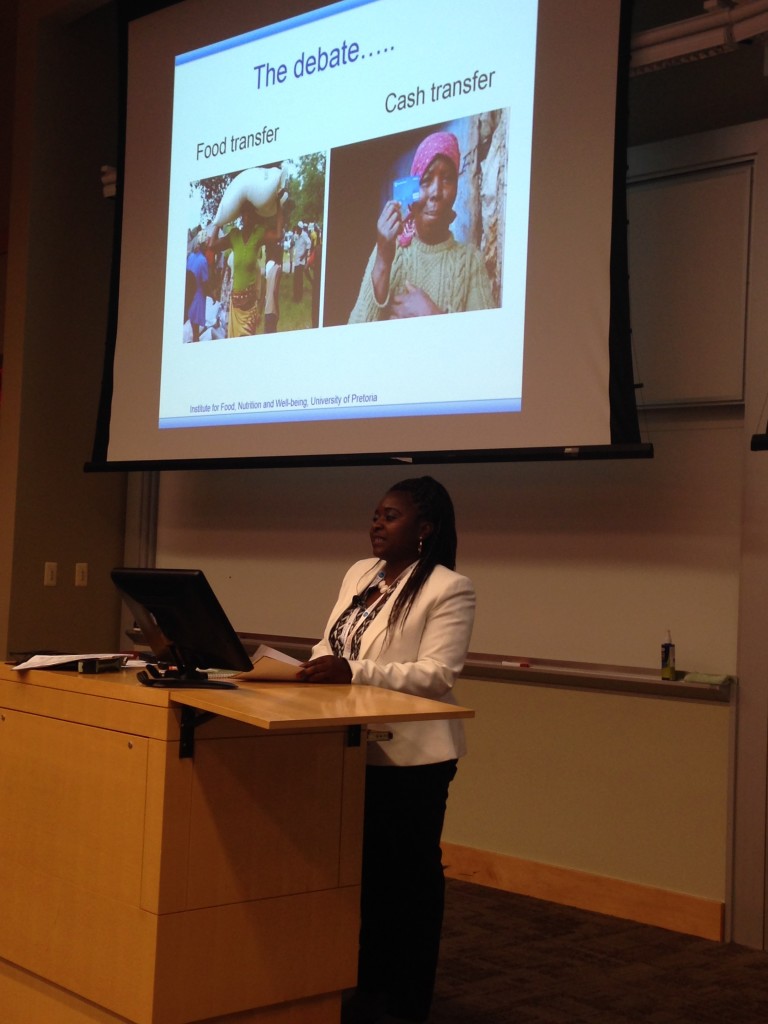A key step in improving nutrition globally involves making more choices available. Consumers need choices of nutritious foods. This need is directly linked to the availability and access dimensions of food security. At the same time, policy makers need options to better design food policies and programs—in part to expand consumers’ choices. Research presented at the 2nd International Conference on Global Food Security highlighted much of the progress we have made globally in making more choices available in both contexts.
Nutritious foods
With global availability of sufficient foods less of a problem than we have historically foreseen, due largely to intensification of food production systems and reductions in food losses via technology, much of the policy focus is turning to improving the nutritional quality of foods. Research presented at the conference highlighted impressive improvements in the availability of nutritious food ranging from Sushil Ghimire’s work with SNV increasing food diversity in retail outlets in Nepal, to development and promotion of bio-fortified tubers in Africa by the International Potato Center (presented by Simon Heck), to moves to provide high quality nutritional supplements to targeted recipients as food assistance (as evaluated by Travis Lybbert and colleagues).
Policy choices
Choices have also been expanding from a policy and programmatic perspective, including options available for food assistance transfers, as donor governments are increasingly willing to source foods locally or regionally or provide still more choice to recipients via cash or vouchers. New technologies, from cell phone money transfers to remote sensing, further expand policy options, make providing different transfer types progressively easier, and put more knowledge at our fingertips (often quite literally, as described by Joe Reisinger and others).
Consumer choices
Along with this expanded buffet of choices comes the need for consumers to understand how to make the right ones—a need that is directly linked to the use dimension of food security. Consumer choices have an important role in food security across all contexts, from acute child malnutrition in the poorest communities of the developing world to issues of obesity and related ailments in middle-income communities in the United States.
When it comes to food assistance programs, the choices that consumers make complicates the choice of which form of transfer policy makers should ultimately provide. Research in rural Niger (presented by one of the authors of this post), for example, finds that people pay back debt at the cost of more diverse diets when they receive cash transfers. While this choice may lead to long-term benefits, it may also raise concern for current nutrition, especially for children. The experimental study on demand for nutritional supplements for children in Burkina Faso presented by Lybbert found that while households purchased the products, demand was insufficient to cover the cost. Demand persistence was also a problem—although wealthier households were more likely to continue the supplements as recommended, particularly when fathers were on board.

To teach…or to “nudge”?
A recurring debate involves the extent to which policy makers can and should play a role in leading people to more nutritious choices.
A school-based study in Indonesia (also presented by an author of this post) found that both children and parents’ willingness to pay for fresh milk could be increased with policy-supported education strategies; children would substitute towards sweetened-condensed milk otherwise. A study by the Research Triangle Institute presented by Jonathan Blitstein found that adding an education component to U.S. food assistance programs through SNAP-Ed has shown potential to increase consumption of fruits and vegetables, particularly in the school feeding context.

Consumers’ choices can also be affected by largely unconscious processes and impulses and, because of this, could be “nudged” to eat more nutritious food by clever policies and adjustments. A Cornell school lunch study led by David Just found that simply putting fruit instead of candy by the cash register shifted consumption toward fruit; offering a choice between carrots and celery, rather than just adding carrots to all lunch trays, significantly increased the percentage of the carrots that kids consumed.
These findings are informative and show how the behavioral component of food choice is becoming increasingly pertinent, but we need to continue to expand the evidence base on which policies work best to improve nutrition outcomes while still allowing consumers control over their choices. Nutrition education programs can be essential components in shifting choices: for parents of children in schools where meals are provided and for consumers making quick decisions in grocery stores. “Nudge” policies can make the more nutritious decision easier, although little is known about applying these clever tactics appropriately and effectively in developing country settings.

